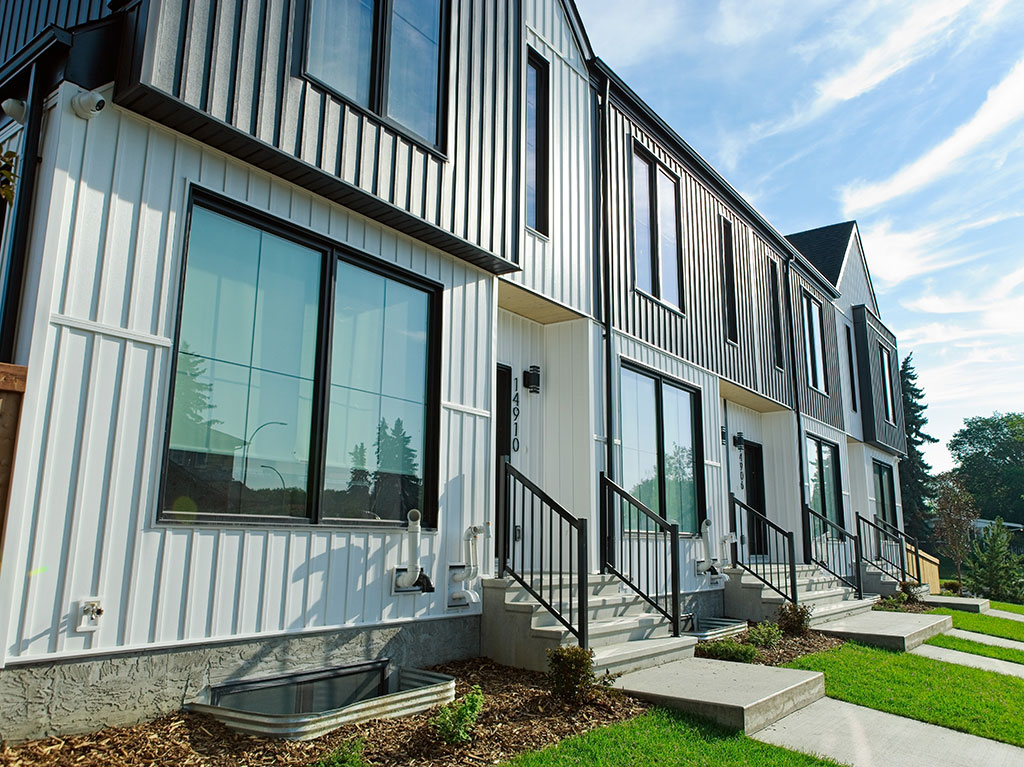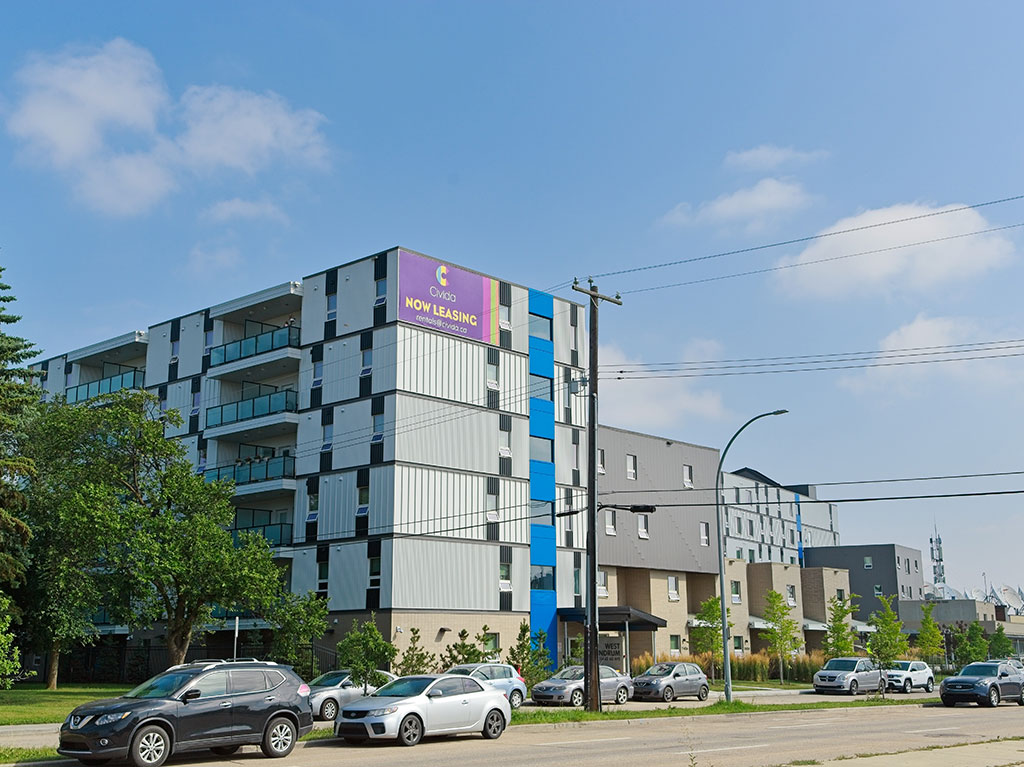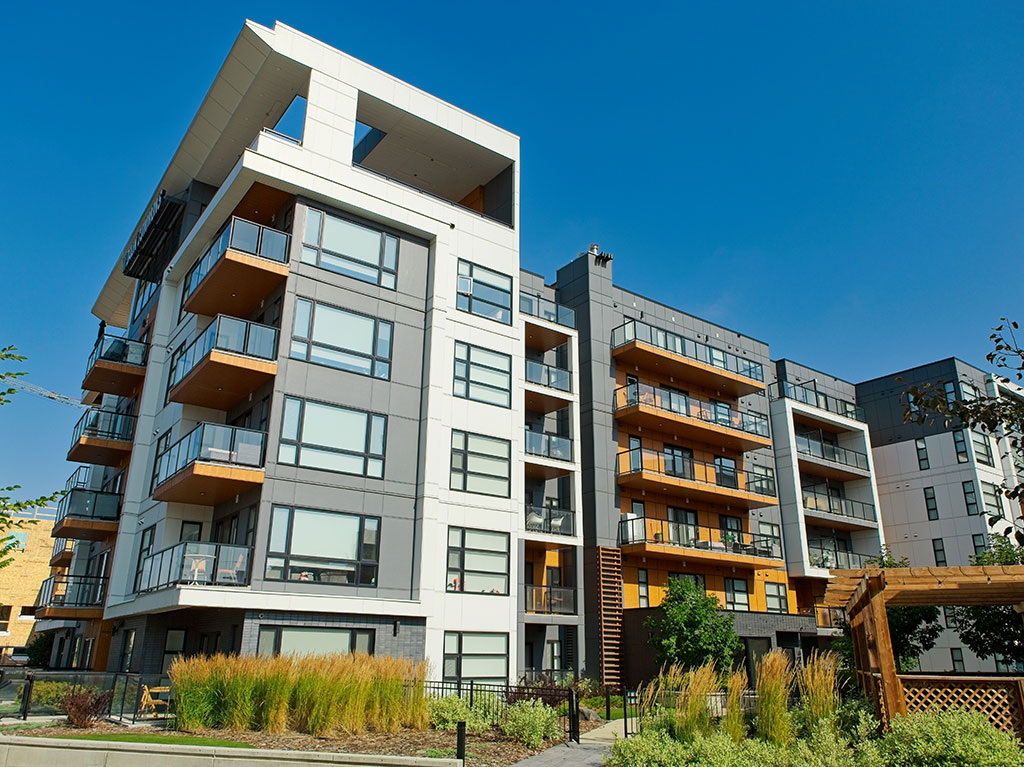Breaking Down Barriers To Infill Development
The City Plan identifies Priority Growth Areas, which are the nodes and corridors, urban centres and main streets, in Edmonton’s redeveloping area, which is roughly inside the Anthony Henday, expected to see the most near-term growth. Both The City Plan and District Plans encourage development intensification in these areas and around mass transit - like an LRT stop - to support Edmonton’s growth management goals.
Why does it matter?
By focusing on Priority Growth Areas, the City can coordinate its resources and leverage existing and planned transit to help create a healthy, urban, climate-resilient city where residents have access to a variety of housing and transportation options and can meet their daily needs close to home.
How will the Housing Accelerator Fund help?
One barrier to residential infill development is the initial cost to design and install off-site infrastructure, such as water, wastewater and storm systems, electrical distribution systems and street lighting, and mobility improvements like sidewalks, alleys and traffic lights. This is particularly true in cases where the infrastructure built by one developer benefits multiple parcels, because the first developer bears the full cost.
Through the Infill Infrastructure Fund, the City will help offset infrastructure costs in the short-term for residential and mixed-use development in Priority Growth Areas, within 800 metres of mass transit in the redeveloping area, or non-market affordable housing projects in the redeveloping area.
The City will also create a plan for how it can use HAF funds to prioritize and support the development of non-market affordable housing in Priority Growth Areas.
Milestones
- Launch (Complete)
- Funding applications will be accepted on a first-come, first-served basis until July 9, 2026 or until all funding is allocated
Priority Growth Area Rezonings
- Public Engagement: Complete
- Public Hearing: Complete
Affordable Housing Land Acquisition Framework: 2025
The City allows a diverse range of housing options beyond secondary suites in a primary dwelling. Backyard housing, formerly known as garden suites, allows single or multi-unit development in the backyard of single-detached, semi-detached, or row houses.
Why does it matter?
Secondary suites and backyard housing add flexibility to our neighbourhoods. By including smaller, lower maintenance and more affordable living options in our communities, older residents can downsize while staying in the neighbourhoods they love, younger residents can find housing that fits their budget, and families can enjoy the benefits of multi-generational living or rental income.
How will the Housing Accelerator Fund help?
The City will update its development guides on secondary suites and backyard housing to align with the new Zoning bylaw and any regulatory changes. HAF funding will support a promotional campaign to raise awareness among residents and developers of the opportunity to add this type of housing to their properties in conjunction with expected new financing opportunities from Canada Mortgage and Housing Corporation (CMHC).
Milestones
Promotion of existing material: Complete
Renewable District Energy Systems are a key component of Edmonton’s Community Energy Transition Strategy. In the Blatchford community, a City of Edmonton utility is currently providing renewable heating, cooling and hot water energy services to homes through the use of an innovative District Energy Sharing System.
Why does it matter?
As Edmonton gets ready to welcome its next million residents, Blatchford will be critical to reaching the City’s goal of 50% growth through infill development. Blatchford is leading the way in climate resilience, prioritizing housing density, active modes of transportation, low-impact design and renewable energy.
How will the Housing Accelerator Fund help?
The City will use HAF funding to encourage multi-unit housing development in Blatchford by providing rebates for District Energy Sharing System infrastructure and connection fees. The funding will be available for land that’s designated for multi-unit housing, focusing on low to medium density residential apartments/condo buildings.
Milestones
District Energy Infrastructure Rebate Program: 2025
Edmonton’s Zoning Bylaw is the primary regulatory tool required to implement The City Plan and determines what can be built where. It sets the rules for:
- Where new buildings should go
- The type of buildings they can be
- Type of businesses and activities that are allowed
Why does it matter?
Edmonton is leading the way among Canadian cities by allowing up to 8 units as of right city-wide. This transformative change allows for gentle density throughout the city’s redeveloping areas and is fundamental to meeting HAF targets related to missing middle and multi-unit housing.
Milestones
Finalize Draft Bylaw: Complete
Adopt New Zoning Bylaw: Complete
Implementation: Complete
The updated Zoning Bylaw was approved by City Council in October 2023 and came into effect on January 1, 2024.
This initiative will establish an expedited permitting process for standardized missing middle housing designs within the Residential Small Scale (RS) zone. By reducing administrative wait times associated with permitting and approvals, this program will enable more efficient delivery of missing middle housing options.
Why does it matter?
The fast-track process for standardized drawings aims to reduce permit wait times to align with greenfield development timelines. By streamlining approvals for pre-approved missing middle and infill housing designs, this initiative will enhance efficiency while improving design quality and regulatory compliance..
Milestones
- Creation of an Accelerated Permitting Process: 2025
- Design Drawings: 2026
- Promotion of Standardized Designs: 2026
Downtown Edmonton hosts thousands of post-secondary students who bring energy, ambition and opportunity to the city’s core. This $15-million program will help successful applicants with the construction costs for housing built to meet student needs.
Why does it matter?
A growing number of students are attending post-secondary institutions that have expanded in Edmonton’s Downtown. When students in Edmonton succeed, the city benefits; we want graduates with new skills and new ideas to stay in Edmonton and make their dreams and ambitions a reality. Creating more student housing downtown will help create a more economically and culturally vibrant city centre.
How will HAF help?
The City is using HAF funds to incentivize the development of student housing.
Milestones
- Program launch: 2025
- Student Housing Needs Assessment: 2026




